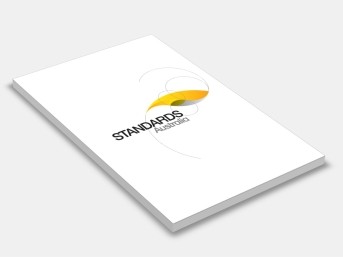AS 1603.3:2018 Automatic fire detection and alarm systems, Part 3: Heat alarms
Standards Australia
Supersedes: AS 1603.3-1996 Automatic fire detection and alarm systems, Part 3: Heat alarms
Draft Designation: DR AS 1603.3:2016The objective of this Standard is to prescribe requirements for heat alarms intended for use as a supplementary part of an automatic smoke alarm system in domestic dwellings or residential accommodation buildings as required by the National Construction Code or state and territory regulations. For this reason interconnectability is mandated for heat alarms.
The objective of this edition is to define the requirements for heat alarms and harmonize these with the requirements for smoke alarms, having given due consideration to requirements within International Standards, as set out by ISO, and those specific to the Australian environmental and regulatory framework.
Notes used in this Standard are of an advisory nature only and are used to give explanation or guidance to the user on recommended considerations or technical procedures, or to provide an informative cross-reference to other documents or publications. Notes to clauses in this Standard do not form a mandatory part for conforming to this Standard.
Statements expressed in mandatory terms in notes to figures and tables are deemed to be requirements of this Standard.
Statements expressed in mandatory terms in notes to figures and tables are deemed to be requirements of this Standard.First published as AS 1603.3-1996. Second edition 2018.
This Standard contains requirements for optional functions. These functions do not have to be provided on the heat alarm; however, where these functions are provided, they have to comply with the requirements specified for them.
Each optional function is set out in a separate clause, with its own set of associated requirements, in order to permit heat alarms covered by this Standard to have different combinations of functions and still conform to this Standard.
Two optional sound output patterns are specified in this Standard. The option allows national regulators to choose a sound pattern complying with ISO 8201 or ISO 7731, depending on the desired response of the building’s occupant to an alarm condition.
A higher temperature, Class C heat alarm is included for heat alarms installed in areas subject to a greater temperature range, such as leisure accommodation vehicles.
Additional functions not specified in this Standard are permitted, provided they do not jeopardize any mandatory function required by this Standard.
Contents:
1: Scope
2: Normative References
3: Definitions
4: General Requirements
5: Tests
6: Test Report
This Standard specifies requirements, test methods and functional criteria for heat alarms intended for household or similar residential applications.
This Standard also covers (but does not require) the inclusion within the heat alarm of facilities for—
(a) visual fault condition indication; and
(b) alarm-silence facility.
Where such facilities are included, this Standard specifies applicable requirements.
Fire Detection, Warning, Control and Intercom Systems.
Association of Hydraulic Services Consultants Australia; Australasian Fire and Emergency Service Authorities Council; Australian Chamber of Commerce and Industry; Australian Industry Group; Australian Institute of Building Surveyors; CSIRO; Deafness Forum of Australia; Department of Health and Human Services, Vic.; Engineers Australia; Fire Protection Association Australia; National Electrical and Communications Association; National Fire Industry Association; Property Council of Australia; Society of Fire Safety.
